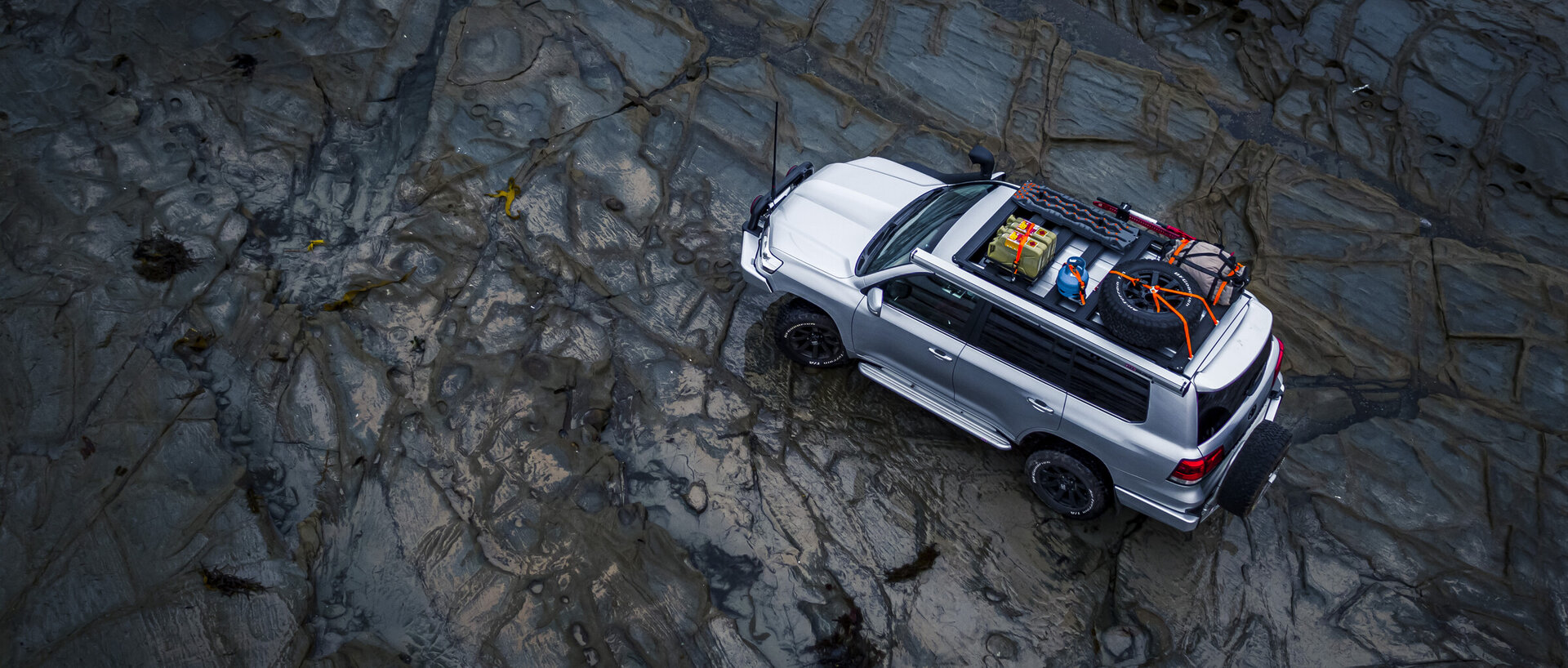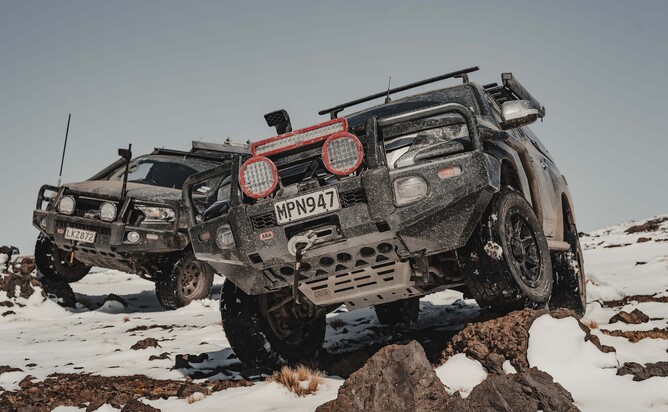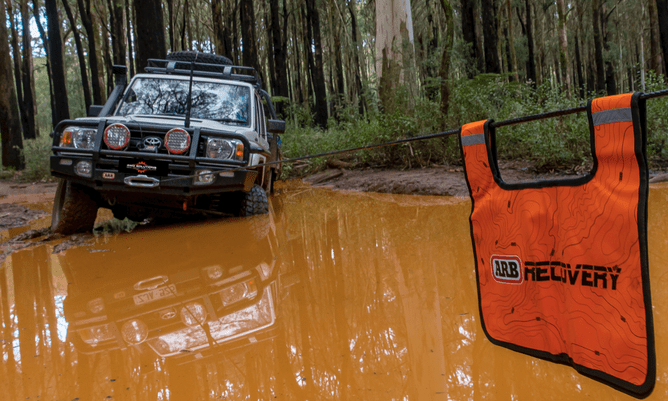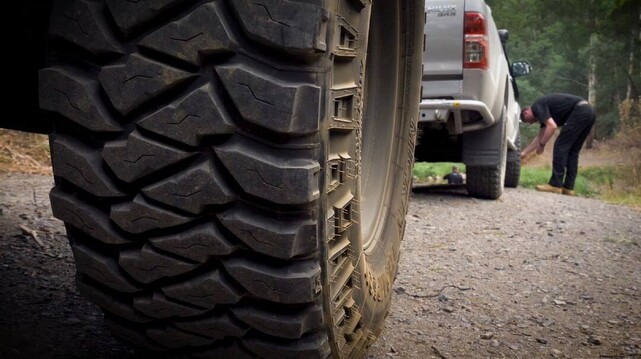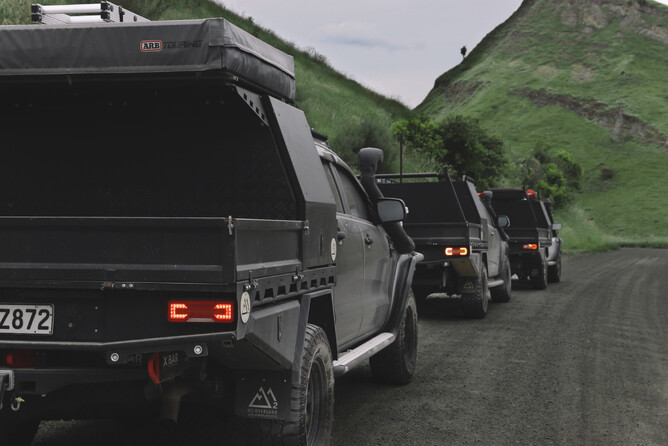For those of us who are adventure seekers and keen four-wheel drivers, Winter is a fantastic time to get out and explore the many 4x4 tracks our picturesque country has to offer. You can expect Winter exploring in New Zealand to be rugged, action-packed and loads of fun, whether you're bush bashing or hitting the high country, however it's important to remember things can turn south quickly if you're not prepared, especially after bad weather.
It's important to take your time, and be equipped with basic safety knowledge when you're out on the tracks and ensure your vehicle is fitted with some essential gear before heading off-road.
Read on to learn our top 5 Safety Tips for Four-Wheel Driving in Winter.
1. Always Travel With Others
A good rule of thumb is to never head out four-wheel driving by yourself. Not only is it always better to bush bash with your mates, if things do go wrong and you get stuck or need urgent help, your chances of getting out and home safely instantly increases. Providing ol mate has some basic gear on their four-wheel-drive and know what they're doing, you'll be right!
Not to mention, it'll make for a good yarn around the campfire with a few beersies afterwards.
2. Choose Recovery Gear You Can Trust
If your vehicle’s caught in a torrential downpour on a steep rugged track, bogged in knee-deep mud or stuck in a fast-flowing water crossing, the reliability, performance and durability of your recovery gear is essential and really can be life-saving. Don’t trust your vehicle to substandard recovery products that could jeopardise you and your vehicle’s safety!
TIP: Snatch Straps aren't recommended for badly bogged 4WDS - If your four-wheel drive is bogged up to the axles, then a snatch strap really isn't going to cut the mustard! Instead, your best bet would be to use your winch and your recovery boards if needed. One of the top selling winches on the market is the Bushranger Revo, available in both 10,000lb and 12,000lb. This winch really is loaded with features, including high-quality construction, low current draw and an advanced proportional friction braking system which will reliably hold 100% of the rated load with no slippage.
We recommend choosing recovery gear that is engineered and manufactured to the highest standards. We stand by ARB, for this reason, when we're out there doing it, we have purpose-built, high-quality gear that has passed rigorous real-life testing on hand, when we need it most!
Check out ARB's full range of recovery gear here.
3. Water Crossings - Always Proceed With Caution
Water crossings in a four-wheel drive can be a tonne of fun, providing you know what you're doing!
However, in Winter, bodies of water change rapidly, fast-flowing and filled with many unknowns like big drops, and under surface logs and rocks that quickly cause expensive damage to your vehicle. It's important to proceed with caution and use the following guidelines before any water crossing.
TIP: As you approach a water crossing, the best thing to do is turn your vehicle off, get out, and access.
◙ Allow the vehicle to stop for 5 minutes and let everything cool down. The last thing you should be doing is taking red hot axles and plunging them into cold water.
◙ Take this time to Access the Crossing - How wide is it? What is the substrate made of and how firm is it? How fast is the water flowing and how deep is it? Can you see any obstacles you need to be aware of? Is the water clear & can you see white ripples?
TIP: Drop a leaf, twig or bit of bark into the water, if it's floating downstream faster than walking pace, it's a wise idea to give this crossing a miss!
◙ The last thing we recommend would be to walk the crossing before driving through it, it's always better to be safe than sorry.
◙ If you're in a manual you don’t want to be changing gears half-way through, losing traction or momentum in a river crossing is never a good idea and can make it a lot harder to get yourself going, especially if you get stuck!
◙ Run the Rear Diff Lock, a river is one of those areas where you’re going to get some pretty questionable traction. Soft surfaces, slimy rocks, water, and a lot of undulating surfaces underneath. Running that diff-lock means you can guarantee that both tyres are going to be spinning, increasing your chances of pushing your way through any obstacles.
4. Diff Breather & Snorkel
Let's just say, it’s cheap insurance…
An air and water-tight snorkel will offer clean air on those dusty trails and offer protection from getting water ingress into your air box and engine. For a diesel engine this means #gameover! Many snorkels on the market are just raised air intakes, which won’t cut it in a river crossing! Ensure you get a proper air and water tight snorkel fitted to your 4WD before deciding to take a dip! We trust no other than Safari Snorkels for their quality, efficiency, and performance and will be your engine's best friend whether you're facing water, dust or snow.
Diff Breather Kits - Why you need one! When driving through water, the change in temperature to your diffs, transfer case and gearbox causes a vacuum effect, sucking water into places it doesn’t belong; leading to serious & expensive repairs! Diff Breather Kit’s are a very economical solution which stop your differentials (as well as gearbox and transfer case) from sucking in water when driving through water crossings and large water hazards. Often an overlooked accessory for your 4x4, but it's worth its weight in gold! Grab yours here.
5. Tyres Suitable For The Terrain
Having the right tyres to suit your vehicle and the terrain you're driving on is essential. Not only for your safety but they can be the difference between where you can and can’t go. With your tyres being the only thing connecting you to the ground, quality matters!
All-Terrains are always a good option as they will offer decent traction, have good puncture resistance and will be suitable for everything from asphalt, to mud.
The best option if you're heading off road in Winter, where you're tackling rocks, clay and mud would be to change your tyres over to mud tyres. When looking for a mud tyre you want to consider the tread pattern, construction and durability, off-road traction and of course quality. View quality tyre brands here.
TIP: When heading off-road, it's important to reduce your tyre pressure. Airing down will give you more traction off-road, whether you're driving in sand, snow, dirt, rocks, or mud.
Grab your tyre accessories here.
There's absolutely no need to keep the 4x4 on-road this season, after all Winter really is one of the most remarkable seasons to get out and explore in New Zealand, and with a little know-how and preparation, it's an adventure worth taking!
If you're looking for your next 4x4 destination, check out 4X4 Explorer. They are New Zealand's most complete "go to" resource for off-road route information. All routes are supplied with a grade of 1 to 5, a route description, quality photographs, advice on equipment required and a full set of downloadable GPX files. A fantastic resource to help plan your next epic adventure!
So, what are you waiting for? Get that 4x4 ready and head out this Winter!
